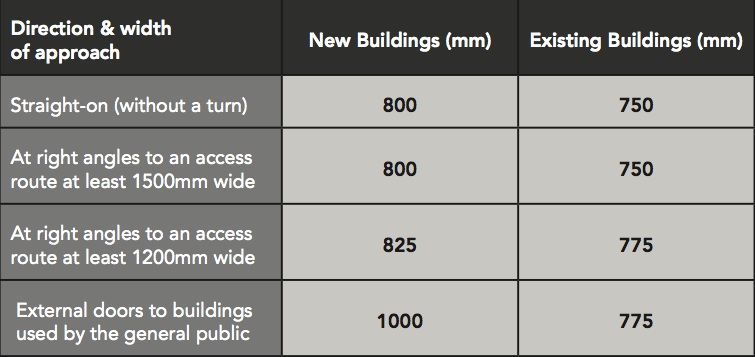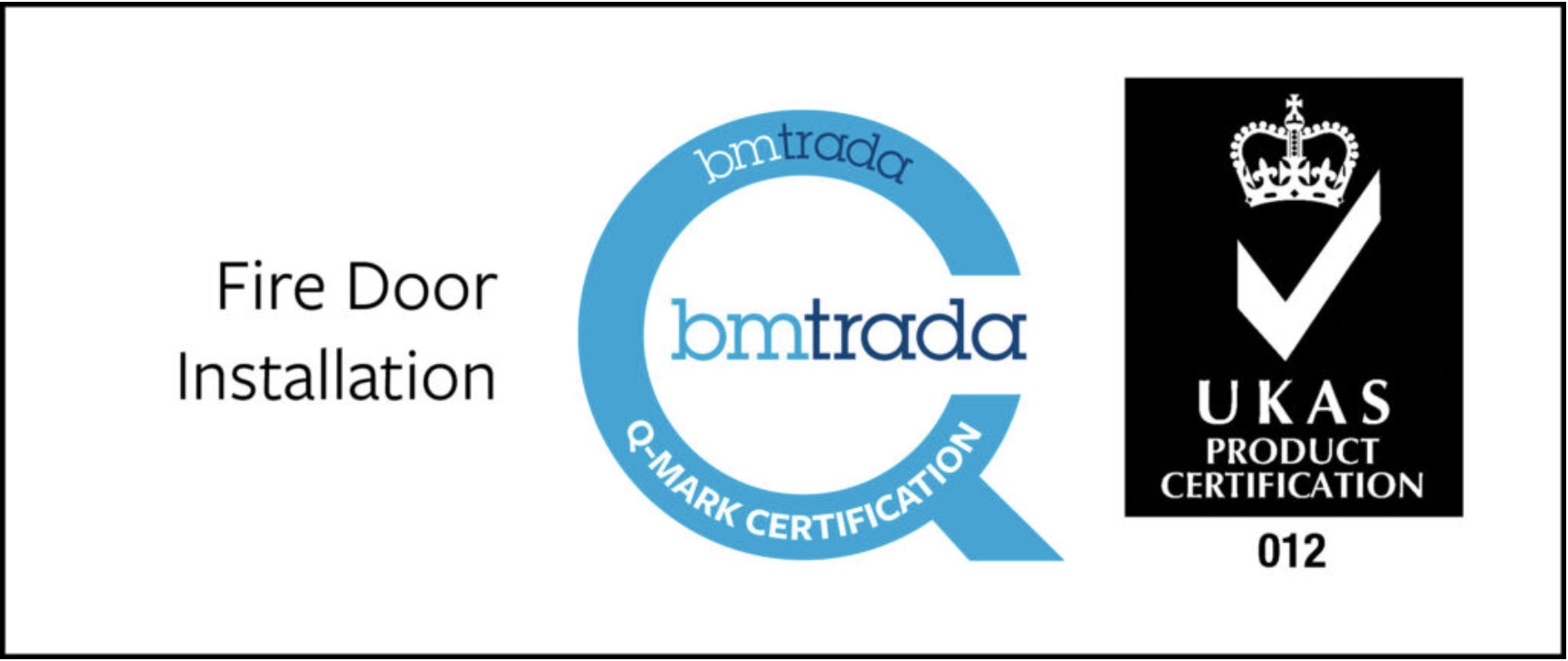‘What are DDA compliant door widths?’ is a question that we’re often asked.
It’s important to note that although referred to as ‘DDA compliant’, the Disability Discrimination Act or DDA is no longer in effect. Despite this, DDA compliance is still the way many people refer to accessibility regarding doors.
Access requirements and ‘DDA Compliance’ now forms part of the Equality Act or EA – you can find out more about this change in our post ‘Part M? DDA? BS 8300? Or the Equality Act?’
To comply with current standards (BS8300) and building regulations (Approved Document M), doors and entrance should be designed and specified using ‘Effective Clear Opening Widths’ or (ECW).
The space around a door (or ECW for doors) is an important factor when designing buildings for inclusivity; it will determine how you approach the door, either head on or at an angle.
The direction and width of approach determines the clear opening width required for door specification, due to the angle of the door as the diagram below shows.
Note: The ECW is the width of the opening measured at right angles to the wall in which the door is situated from the outside of the door stop on the closing side to any obstruction on the hinge side e.g projecting door furniture, the door or the door stop. (see diagrams above)
Minimum Effective Clear Opening Widths (ECW)

To find out more about other design considerations to meet the requirements of Part M you can download our eBook ‘Specifying doors to meet Approved Document M of the Building Regulations’.





